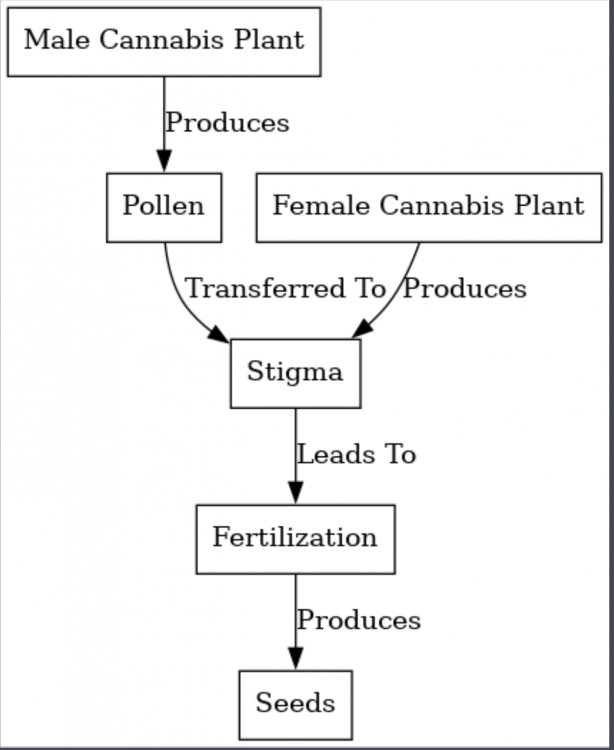
Introduction
The cannabis plant is dioecious, meaning it has distinct male and female individuals. Understanding the differences in biology between male and female plants is crucial for growers, particularly those focusing on the medicinal and recreational applications of cannabis. In this guide, we delve into the specifics of pollen, stigma, and fertilization, along with the risks of cross-pollination.
Biology of Male Cannabis Plants
Pollen Production
Pollen Density: High
Active Compounds: Negligible cannabinoids
Travel Range: Pollen can travel up to several miles, depending on environmental conditions (Clarke & Merlin, 2013).
Risks to Female Plants
Exposure to male plants can lead to fertilization, which decreases the cannabinoid content in female plants and results in seed production (Small, 2015).
Biology of Female Cannabis Plants
Stigma
Density: Moderate to High in flowering stage
Active Compounds: Trace cannabinoids
Role: Captures pollen for fertilization
Fertilization & Seed Production
Upon successful pollination, female plants shift energy to seed production, reducing cannabinoid synthesis (Potter, 2009).
Comparative Chart: Male vs Female Cannabis Plants
| Plant Sex | Pollen/Stigma Density | Active Compounds | Travel Range of Pollen |
|---|---|---|---|
| Male | High (Pollen) | Negligible | Up to several miles |
| Female | Moderate to High | Trace levels | N/A |
Risks of Cross-Pollination
Male pollen can travel substantial distances, posing a risk of unwanted fertilization in female plants. This is particularly detrimental for medicinal cannabis cultivation where high cannabinoid content is desired.
Precautions
For those using cannabinoids for medical reasons such as anxiety, epilepsy, or cardiovascular conditions, specialized guidance is strongly advised. Contact Dr. Caplan at CED Clinic for personalized care.
References
- Clarke, R. C., & Merlin, M. D. (2013). Cannabis: Evolution and Ethnobotany. University of California Press.
- Small, E. (2015). Evolution and Classification of Cannabis sativa (Marijuana, Hemp) in Relation to Human Utilization. The Botanical Review, 81(3), 189-294.
- Potter, D. J. (2009). The Propagation, Characterisation and Optimisation of Cannabis Sativa L as a Phytopharmaceutical. King’s College London.
📗 Note: The diagram you see here is based on principles discussed in greater depth in “The Doctor-Approved Cannabis Handbook.” Enhance your knowledge by purchasing the book directly through this link 📗


